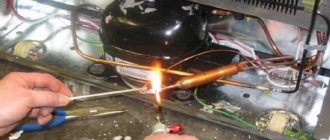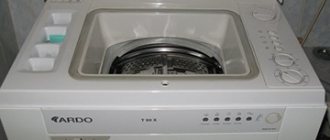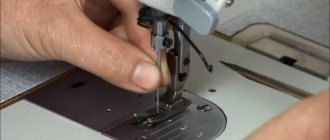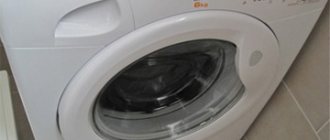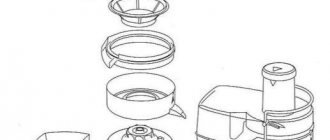The service life of vacuum cleaners is on average 5-10 years, and warranty repairs provided by the manufacturer or distribution company are 1-2 years. During this time, equipment rarely fails. Exceptions are manufacturing defects, cheap and low-quality products.
Therefore, if the unit breaks down after the warranty period has expired, you have to contact expensive service centers. Agree, wouldn’t it be nice to learn how to fix some problems yourself? This skill will help when there is no time to wait for a master, and will also save the family budget.
Do you doubt your own abilities? We will help you cope with the problems that arise. In the article, we identified the most common breakdowns of different types of vacuum cleaners, and also provided detailed instructions for eliminating them.
In addition, we have listed the basic rules of operation and prevention, the observance of which will prevent the occurrence of any malfunctions in your device.
Malfunctions in different types of vacuum cleaners
Before you figure out what types of breakdowns most often occur in cleaning devices, you should familiarize yourself with the most popular types of units.
According to the specifics of cleaning, devices for dry and wet cleaning are distinguished. The first type is a more budget option, which is produced by almost all well-known brands - Samsung , Bosch , LG , etc.
Washing vacuum cleaners belong to the premium segment: their cost is much higher, but the functionality of the devices is also high.
With the help of such a unit it is possible to perform not only dry and wet cleaning of floors and furniture, but also to wash windows and use it as an air humidifier
Their design is similar to conventional dry cleaning devices, however, it additionally contains a water container, special nozzles and filters.
Based on the type of construction, the following types are distinguished:
- standard household - floor-standing appliances that move using wheels on the bottom of the case;
- vertical – battery-powered and corded units that provide comfortable cleaning due to their compact size and light weight;
- portable (manual type) – intended for cleaning car interiors, small rooms, cleaning furniture;
- robotic – devices with automatic cleaning programs without user intervention, controlled using a remote control.
Depending on the type of unit, dust particles and debris can be collected in a special fabric or paper bag, in a plastic container or a special container, passing through an aquafilter.
Features of repairing devices with a bag
The principle of operation of a unit with a dust bag is that air masses pass through it, then through an ultra-cleaning filter and the engine compartment. The HEPA filter used in such products not only traps dust microparticles, but also acts as a compressor.
Most often, in these models, filters are the main parts that fail most quickly.
If the device is not properly maintained or the bag and filter elements are not cleaned in a timely manner, the HEPA and fine filters become clogged, which reduces the suction power or leads to engine breakdowns.
Some models have a sensor function for determining the intensity of air intake: if problems are detected, the vacuum cleaner automatically turns off and the filter is cleaned.
If the device does not provide such technology, then you should independently monitor the quality of garbage suction. You should definitely be alerted to the appearance of a hum or overheating of the equipment body - this is a reason to check all the filter elements.
“Diseases” of units with a cyclone filter
The advantage of container models is the absence of the need to frequently replace disposable filters, quick cleaning of the waste container, high quality surface cleaning with additional air cleaning.
The maximum retention of microparticles occurs in the cyclone filter. Therefore, purified air masses, passing through the engine compartment, and then through the HEPA filter, do not clog it. Thus, the filter lasts much longer than in options with bags.
Users note that canister vacuum cleaners do not break down very often. Most often, problems arise with the mesh filter, which is located at the outlet of the cyclone.
During operation of the device, the filter element protects the fan motor from metal and sharp objects that could damage the integrity of the part. Therefore, you should definitely check that it is not clogged with debris before you start cleaning.
Types of breakdowns of models with an aqua filter
The dust collection process is carried out in this way: the incoming air beats the water in the container to small particles, removing it under the front visor.
Dust masses, together with a foggy vortex, continuously pass through the hose and settle to the bottom of the dust collector. Remaining dust particles pass through where moisture is trapped. Next, the purified air without water passes through the engine and cools it.
Having understood the principle of operation of the device, we will now consider the most common failures in its operation.
For a long service life of the vacuum cleaner, you must follow all instructions. It is recommended to fill the container only with purified or distilled water to the indicated mark.
It is also necessary to clean, rinse and dry all used parts. This will allow you to use the device without replacing the HEPA fog filter for 2 years or more.
If you use ordinary water and do not follow the operating instructions for the device, the filter will quickly become clogged. The filter element cannot be cleaned, but only replaced
Another problem is the failure of the fan motor due to burnout of the winding. This can be noticed if the unit begins to overheat, hum, the suction power of debris has decreased, and RCDs and automatic circuit breakers are knocked out. If a problem is detected, you will need to replace the faulty part.
The most common vacuum cleaner failures
Operating a vacuum cleaner requires following simple rules. If the unit is used improperly, the vacuum cleaner gradually breaks down. To prevent malfunctions, you should handle the product with care. The occurrence of a malfunction has various reasons that you need to know about.
The vacuum cleaner motor performs the most important functions. It transforms electrical impulses into turbine rotation, thanks to which the vacuum cleaner performs its main functions. The motor fails for various reasons.
- overheating in case of long-term uninterrupted operation - it is recommended to let the vacuum cleaner cool down every fifteen minutes of operation;
- overheating of the motor due to a clogged filter, a full dust container or a foreign object in the hose - it is necessary to regularly change filters and dust bags, and if you suspect a clogged hose, carefully inspect it with the vacuum cleaner turned off;
- a short circuit or combustion of the motor occurs due to water entering the unit - safety rules should be followed and this should not be allowed to happen;
- increased load on the engine due to imbalance of the turbine, on which dusty wet deposits have adhered as a result of exposure to moisture - any humidity must be avoided.
Bearings can also be one of the reasons for motor failure. When they crumble, they can jam the engine. In addition, bearings may become loose over time. Particular attention should be paid to the installation of the hose and its integrity. It should be free of damaged areas and fit snugly to the body of the vacuum cleaner.
When using a vacuum cleaner, it is necessary to monitor the position of the cable; if it is pinched, the motor will burn out. Also, some minor malfunctions are possible - burning of contacts on the turbine power regulator, or on the switch.
When changing filters, you should know that there are up to three of them in a product - in the dust collection container, in the engine compartment and at the exit from the housing. The last filter serves as an obstacle for dust to escape outside.
Stable voltage in the electrical network affects the reliability of the product. A voltage surge causes a malfunction. To avoid engine combustion, it is necessary to install an electrical stabilizer.
The vacuum cleaner motor is equipped with carbon brushes, which can become unusable over time. The installation of new brushes should be done by a specialist with experience in servicing the unit and who has special tools. When you try to service the vacuum cleaner yourself, the turbine sometimes starts to rotate in the opposite direction, and dust is blown out. Disassembling and repairing the vacuum cleaner is not recommended at home. This should be done by professionals who have deep knowledge of such a product. The best solution would be to take the vacuum cleaner to a service center.
You should know that any unit has its own duration of operation and wear. Therefore, it is necessary to regularly inspect and promptly correct any faults found.
Repair instructions for various breakdowns
In each of the types of vacuum cleaner discussed above, various elements and components can fail. This depends on the design of the unit and the principle of its operation.
For example, most often users encounter the following problems:
- no traction;
- there is a foreign smell;
- The device does not turn on;
- a short circuit occurs, the plugs are knocked out;
- there is no cord fixation;
- suction power has decreased;
- noise and vibration;
- other.
Next, we will consider in detail what malfunctions most often occur in various types of products, and how to fix them yourself.
If your device has broken down and the warranty period has already expired, do not rush to take it to a service center. Perhaps the breakdown is simple, and you can repair the vacuum cleaner yourself without the help of specialists.
The examples of malfunctions presented below, methods for diagnosing and repairing them will help you independently solve this or that problem with the unit.
Failure #1 - the device does not suck up debris
When such a malfunction is detected, the device produces a characteristic sound in the form of a hum. This indicates that the engine is running, but is not absorbing dust.
You need to pay attention to such elements as a hose and nozzles, a dust collector, filter mechanisms, and make sure that they are intact.
To do this, you should perform a number of actions:
- Check to see if the bag or container is full of trash.
- Separate all parts from the hose - brush, tube. They may contain debris that interferes with the free passage of air flow. If found, clean the accessories under running water or using a long knitting needle.
- If the reason is not in the hose, then the blockage has formed inside the device. Check all filters (exhaust, fine). If possible, read the instructions and rinse the fine filter and dry it. After this, install the part into the vacuum cleaner body and make sure it is working.
- Inspect the garbage receptacle carefully. Fabric bags must be washed or cleaned of fine accumulated dust, which clogs the cells and interferes with the free passage of air.
Other reasons for poor dust suction may be deformed gaskets, seals, or lack of a tight connection between the hose and the product body. A worn o-ring or broken vacuum regulator bushing must be replaced with new parts.
In another case, when air passes well through the tube and brush, but debris remains on the floor, you should check the height of the brush roller.
Try moving the roller a little higher or lower - experiment. Perhaps the roller is simply not adjusted and cannot fully perform its functions
If it is not possible to achieve ideal absorption of debris, then you will need to replace the nozzle.
Failure #2 - the vacuum cleaner emits a burning smell
If during or after cleaning the smell of burnt rubber appears and the engine stops working, then the reason lies in the winding. To do this, you will need to completely disassemble the motor, repair or replace the burnt armature or stator with a new element.
Engine disassembly instructions:
- Unscrew the bolts from the product body.
- Tilt the housing cover, move the coil and wires and remove the motor.
- Unscrew the side bolts and remove the rubber seal.
- Separate the housing into two parts using a screwdriver.
- Remove the motor from the protective housing.
- Bend the flanges and separate the part, releasing the turbine.
- Unscrew the bolt using a socket head, tightly fixing the stator and the rest of the structure.
- Unscrew all connecting elements and remove the brushes.
- Knock out the anchor using a wrench and a hammer.
Check the serviceability of the bearings and, if necessary, treat them with oil.
It is not recommended to replace the winding yourself: after the procedure, dynamic balancing of the armature will be required, which is difficult to perform on your own
After disassembly, replace the failed elements and reassemble the part in the reverse order.
Failure #3 - equipment does not turn on
Have you noticed that when you repeatedly try to turn on the device, there are no signs of its operation? Then you should check the voltage in the outlet to which the device is connected, as well as the integrity of the power cord.
As a rule, the wire breaks where the cord is attached to the plug, resulting in no contact. If you find this problem, then you will need to completely replace the cord with a new one.
For repair you will need:
- Remove the back cover of the device.
- Unscrew the screws securing the diaphragm.
- Carefully remove it without touching the wires.
- Move the block with the gasket to the side.
- Remove the spring and check its serviceability.
- If necessary, replace wiring and damaged elements.
After the repair has been completed, reassemble the unit in the reverse order according to the instructions.
Faulty switches and internal wiring may also cause the breakdown. Another possible reason is the operation of auto-protection against overheating of the device. This technology prevents engine damage due to increased load during operation of the device.
The presence of a thermal switch allows you to prevent overheating of the device in time, and additional options eliminate the cause - for example, they clean the HEPA filter from dust particles.
Many models of washing units have a special relay installed that turns on when overheating of the device is detected.
If you notice that the vacuum cleaner suddenly turns off and its body is hot, then the relay has tripped. The device will turn on automatically after it has completely cooled down.
The reasons for overheating of the product are clogged filters, dust collector, air duct.
The most unpleasant reason for the unit not turning on is a breakdown of the electric motor. Therefore, the first thing to check is the brushes and commutator. Disassembly of the part should be carried out according to the instructions described above.
The collector assembly must be checked for moisture, which could cause a short circuit in the motor winding. If you find a damp environment inside, you will need to dry everything thoroughly.
A short circuit in the commutator compartment is also possible due to graphite dust from the brushes. To eliminate it, you will need to clean the collector with a brush and cloth.
Failure #4 - problems with battery charging
Battery devices also tend to malfunction sooner or later. In addition to mechanical damage, breakdowns of electric brushes and other accessories, users most often note rapid battery discharge, prolonged charging, or loss of dust suction power.
The reason lies in the battery pack. Depending on the frequency of use of the product, the battery must be replaced after 2-3 years. During this time, the element completely uses up its resource, and repeated charging no longer gives any results.
The suction power of the air flow decreases as the battery capacity decreases.
If you notice these malfunctions in the operation of the wireless unit, then it’s time to buy a new battery. The battery can be purchased at a service center or ordered from an online store
Replacement should be carried out carefully: opening the product case, disconnect the broken battery and install a new one in its place.
If you notice problems with the battery within 1-2 years of operation, this is a reason to submit the equipment for warranty repair.
Failure #5 - problem with fixing the power cord
In corded vacuum cleaners, a malfunction of the winding drum often occurs: the cord does not retract when the button is pressed or is constantly wound up while the device is operating.
The cause may be a burst, stretched or slipped spring. To check if this is so, you need to press the button several times from different sides
If a malfunction is detected, repairs should be carried out in the following order:
- Remove the product housing cover.
- Remove the drum and coil spring of the lever with bushing.
- Remove the brake roller and lever.
- Replace deformed elements - coil spring, support, etc.
- Adjust the tension of the cord in the drum.
- Assemble the drum and install it in place.
- Check the functionality of the stopper lever.
- Assemble the vacuum cleaner by attaching the housing cover.
After complete assembly, you should make sure that the auto-winding mechanism is working correctly.
Failure #6 - decreased suction capacity
Reduced traction can be caused by a clogged dust container, dirty filters, engine problems, or a faulty hose. Another reason is corrosion processes in the connecting cord retracting mechanism.
Which, due to long-term operation of the device, can cause periodic malfunctions and also reduce the suction power of dust masses.
You can restore the correct operation of the unit in this way:
- Remove the back cover of the product.
- Sand the contacts using 20-grit sandpaper.
- Treat them with a cloth moistened with alcohol.
- Using the same procedure, clean the slip rings in the drum mechanism.
- Reinstall the cover.
- Check for electrical contact in the winding mechanism.
After these manipulations, you will be able to use the device safely, and its suction capacity will be restored if the problem was hidden in the corrosion of the auto-winding unit.
Failure #7 - malfunction of the dust collector indicator
Jamming of the piston system of the mechanism and deformation of the indicator spring prevent its proper operation.
When the bag is full, the indicator may not work, which may cause the engine to overheat. This is fraught with even greater damage to the unit.
To repair a failed mechanism, you must:
- Remove the front cover.
- Remove the dust bag, filter, grille, ultra-cleaning filter and device handle.
- Unscrew the screw holding the indicator.
- Remove the indicator tube from the housing.
- Remove the rubber bushing and spring from the tube.
- Completely disassemble the entire mechanism in detail.
- Replace the deformed tube, plug, spring, and if there is a blockage, remove it using a sharp object and a brush.
- Assemble the elements one by one into the indicator housing and install it on the device cover.
Based on the results of the completed procedure, make sure that the indicator is working.
Failure #8 - broken brush in the washing unit
A malfunction of the wet cleaning attachment is a consequence of improper use of the device by the user. According to the instructions, the washing vacuum cleaner must be filled with water up to the mark on the tank.
When dry cleaning, the pump will run idle and for this reason its motor will fail. The pump is an integral part of the tank and cannot be repaired, only completely replaced.
The water and detergent spray tubes are located on the outside. When they are clogged, it is quite easy to determine visually: they are transparent.
To clean, you will need to pull the tube from the fitting and the spray mechanism, and then install it back. If a part is damaged, you can use any plastic tube of suitable length and diameter.
Troubleshooting instructions for various problems
In all the types of devices described above, working parts and mechanisms break. Of course, some breakdowns are most likely related to their design features and operating principle.
The following problems often arise:
- no traction;
- the smell of burnt wiring;
- the device does not start;
- short circuit of the current inside the vacuum cleaner or in the electricity supply cable, while knocking out plugs in the apartment or house;
- the wire is not fixed;
- suction power has decreased;
- the appearance of noise or even vibration.
Next, we will analyze in detail what breakdowns often occur in various types of vacuum cleaners, and how you can fix them yourself.
If the device breaks down and its warranty has already expired, you should not immediately take it to the nearest service center. The problem may not be significant, so you can quickly fix it yourself without the help of a technician.
The breakdown options listed below, methods for diagnosing and repairing them will allow you to eliminate this or that malfunction on your own.
Option No. 1 - the device does not suck in debris
When such a problem occurs, the vacuum cleaner makes a hum. This tells us that the electric motor is functioning normally, but is not sucking in debris.
To resolve it, you need to perform several steps:
- Check that the removable bag or container is not full of debris.
- Disconnect all elements from the hose (nozzle and tube). They can become clogged with large debris, so there may be no air intake. If this is the case, then you need to clean these accessories using good water pressure or a stiff wire.
- If the problem is not in the hose, then most likely the blockage occurred inside the device. View the status of all filters. If the fine filter element is clogged, you need to rinse it thoroughly. After which it must be dried. Next, put it back into the device case and check if it works normally.
- Carefully assess the condition of the garbage disposal using a visual inspection. Fabric garbage bags should be washed regularly and cleaned of fine dust. The latter clogs the cells of the material, which prevents air from passing through it.
The reasons for the deterioration in the strength of garbage collection can also be wear of gaskets and seals, poor (leaky) connection of the hose to the body of the device. Worn elements need to be replaced with new ones.
In other cases, if air enters the pipe and brush normally, but debris is not picked up from the floor, you need to check the height of the brush roller. If you were unable to restore the vacuum cleaner’s collection of debris, you can also try changing the nozzle.
Option No. 2 - you can smell a burning smell from the unit
If during cleaning or after its completion you smell the smell of melted electrical wiring, and the electric motor does not function, then its winding has burned out. Therefore, you will need to remove the cover from the device and disassemble the electric motor for repair or replacement.
The electric motor is disassembled as follows:
- The bolts on the device body are unscrewed.
- The cover is removed from the unit, the coil and wires are moved away, and the electric motor is removed.
- The side bolts are unscrewed and the sealing rubber is removed.
- The housing is separated into two components using a regular screwdriver.
- The electric motor is removed from the housing.
- The rolling is bent and the part is separated, which releases the turbine.
- The bolt is unscrewed with a socket head, and the stator and the rest of the structure are well secured.
- All connecting parts are unscrewed and the brushes are removed.
- The anchor is knocked out with a key and a hammer.
After completing all these steps, the operation of the bearings is assessed, which are lubricated with machine oil as necessary.
After disassembling the electric motor, replace the burnt and broken elements with new ones and reassemble everything in the reverse order.
Option No. 3 - the unit does not start
If you are faced with the fact that the unit does not start and does not show any signs of life, then you need to check whether there is electricity in the outlet and whether the power supply cable is working.
Often the wire in the plug area is damaged, resulting in no power supply to the unit. If this malfunction is detected, then you need to completely replace the wire with a new one.
To repair you need to do the following:
- Remove the back cover of the device.
- Unscrew the screws securing the diaphragm.
- Carefully remove it (without touching the wiring).
- Move the block with the gasket to the side.
- Remove the spring and then check how it works.
- Damaged electrical wiring and other broken parts are replaced.
After completing the repair, you need to assemble everything in reverse order in accordance with the upper instructions.
Faulty buttons (switches) can also lead to this malfunction. The overheating protection of the vacuum cleaner may also work. It allows you to prevent damage to the electric motor as a result of increased load during operation.
The temperature sensor allows you to promptly detect overheating of the device, and other auxiliary functions will help you get rid of the cause - for example, there is an option to clean the HEPA filter from dust.
The reasons for overheating of the electric motor are contamination of the filters, dust collector and air channels.
The most unpleasant failure of a vacuum cleaner is considered to be damage to the electric motor. Before starting to repair it, the first thing you need to do is check the serviceability of the brushes and commutator. The motor must be disassembled in accordance with the instructions described above.
You also need to check the condition of the collector unit for the presence of moisture, as it causes a short circuit in the electric motor. If moisture is detected inside the device, it is necessary to dry it thoroughly.
A short circuit in the commutator compartment can also be caused by graphite dust, which is released during brush friction. To remove this dust, you need to clean the collector with a regular brush and cloth.
Option number 4 - the battery does not charge
Models powered by a battery also break down, and in addition to mechanical damage (wear of brushes and other working elements), users often note a rapid discharge of the battery, as well as a long charging time or a decrease in suction power.
Depending on the frequency of use of the vacuum cleaner, the battery life is 2-3 years. During this period of time, its entire resource is consumed, so the next charge does not give any result. As a result of the reduction in battery capacity, the suction power of the unit decreases.
The battery must be changed carefully. To do this, you need to open the device case, disconnect the battery from the terminals and install a new one in its place.
If problems with the battery appear during the warranty period (1-2 years), then it is better to take the vacuum cleaner to a service repair center, where it will be repaired free of charge.
Option No. 5 - the network cable is not fixed
In wired devices, malfunctions of the drum on which the network wire is wound often occur. Therefore, it does not retract after pressing the button or, on the contrary, curls up during operation of the vacuum cleaner.
Fix this problem like this:
- Remove the cover from the unit.
- Remove the drum and the coil spring of the lever with the bushing.
- Remove the brake roller and lever.
- Replace worn parts (springs, supports, etc.).
- Adjust the tension of the cord on the drum.
- Reassemble the drum and put it back.
- Check the operation of the stopper lever.
- The apparatus is assembled, and then the lid is fixed on it.
After assembly is completed, you need to check whether the automatic winding mechanism is working correctly.
Option No. 6 - reducing suction power
The draft may decrease as a result of clogged dust collector or filter elements, as well as due to problems with the electric motor or damage to the suction hose. Another reason is corrosion in the power cable twisting mechanism.
You can fix this problem yourself like this:
- You need to remove the back cover of the vacuum cleaner.
- Clean the contacts with fine sandpaper No. 20.
- Treat them with alcohol. To do this, you can moisten a napkin and wipe the contacts with it.
- In the same way, you need to clean and treat the slip rings in the drum mechanism.
- Next you need to put the lid back on.
- Then you need to check whether there is contact in the power cable twisting mechanism.
After completing all these steps, you will be able to operate the vacuum cleaner safely, and its main function (dirt suction) will be restored if the malfunction was due to corrosion of the automatic wire winding mechanism.
Option No. 7 - failure of the dust collector indicator
Jamming of the piston mechanism and deformation of the indicator spring lead to its incorrect operation.
To restore the functionality of the piston mechanism, you need to do the following:
- Remove the front cover.
- Remove the waste bag, filter element, grille, filter and unit handle.
- Unscrew the screw that secures the indicator.
- Remove the indicator tube.
- Remove the rubber bushing and spring from the tube.
- Disassemble the mechanism into prefabricated elements.
- The deformed tube, plug and spring must be replaced. If there is a blockage in them, then you need to remove it using a sharp object and a brush.
- After that, you need to install all the removed parts sequentially back into the indicator housing, and then put it on the device.
After completing all repair work, you need to check how the indicator works.
Option No. 8 - malfunction of the brush in the washing machine
Nozzles for the washing unit break as a result of improper operation of the unit. In accordance with the instructions, the reservoir must be filled with liquid to the marked level.
Transparent tubes spraying moisture and detergent are located outside, so their clogging is easily detected visually.
To clean, you need to remove the tube from the fitting and the spray device, and then put it back. If the tube is broken, you can replace it with any plastic tube of the same length and the same diameter.
Prevention of vacuum cleaner breakdowns
To increase the service life of equipment, proper care should be taken. Regular fault prevention ensures high-quality and uninterrupted operation of the unit, and also prevents sudden breakdowns or failures during use.
Periodic visual inspection of the device will allow you to identify worn parts and components and replace them in time. Timely replacement of spare parts is necessary in order to avoid more serious damage to other parts.
Preventative engine care
Caring for the electric motor and early diagnosis of faults prevents possible malfunctions in the operation of the equipment.
It is recommended to disassemble the engine once every 1-2 years, lubricate it, change gaskets, rubber seals, clean filters, and also change bearings when they wear out.
The vacuum cleaner should be disassembled in the following order:
- remove the trash container or bag, filter element;
- unscrew the housing cover;
- clean all parts and mechanisms from a layer of dust;
- Unscrew the bolts and disconnect the engine;
- disassemble it into parts, wash, lubricate, check the condition of the winding, brush-commutator assembly, bearings;
- if necessary, replace worn parts;
- Clean the HEPA filter.
Next, you need to reassemble the device in reverse order.
General recommendations for caring for the unit
Since the main function of a vacuum cleaner is to clean the room from dust, it must be regularly emptied of accumulated debris.
To prevent overheating and damage to components and mechanisms of the device, it is recommended:
- After each cleaning, check the cleanliness of the filters and clean them if necessary;
- Empty the dust bag and garbage container in a timely manner;
- store equipment in a dry place, preventing water from getting on the engine and internal parts;
- Avoid contact with sharp objects that could damage important components of the device;
- observe the operating mode of the unit and do not overheat it.
If problems with the device do arise, follow the above basic recommendations for troubleshooting vacuum cleaner problems.

